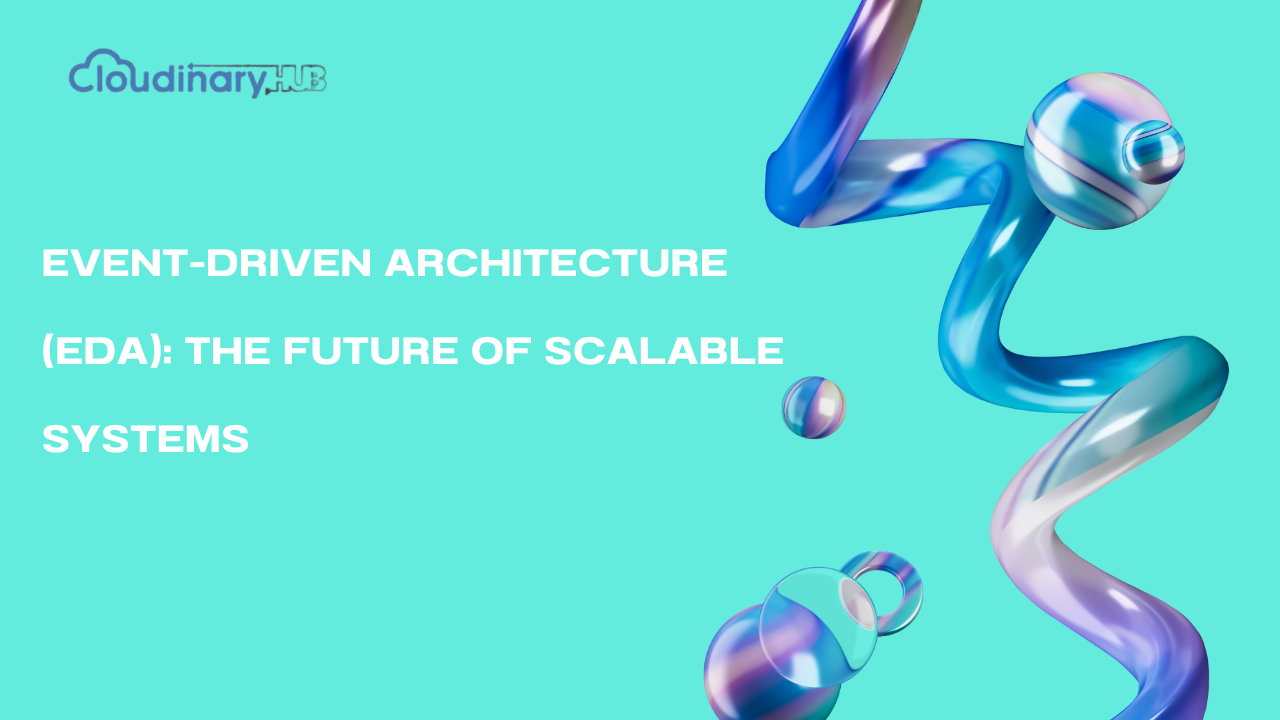Whether it’s an online purchase confirmation, a real-time stock market update, or an alert from an Internet of Things device, have you ever pondered why modern applications seem to react so quickly to events? Event-Driven Architecture (EDA) is the key to these flawless experiences.
Let’s discuss what EDA is, why it’s revolutionary, and how to use it to create systems that are future-proof, scalable, and responsive.
Event-Driven Architecture (EDA): What is it?
Okay, so let’s dissect it. EDA is similar to a domino effect in that a series of events are set off by one another. EDA enables asynchronous communication between services using events, as opposed to traditional systems where one service contacts another directly, creating tight dependencies.
Let’s say you own an internet business. Each service simply initiates an event and proceeds when a consumer places an order, rather than waiting for the shipping system to react before proceeding. This increases the system’s resilience, scalability, and speed.
Key Components of EDA
| Component | Role |
| Event Producer | Generates and emits events when something happens (e.g., user clicks ‘buy’). |
| Event Router (Broker) | A messaging system (e.g., Kafka, RabbitMQ, AWS SNS) that delivers events. |
| Event Consumer | Listens to events and acts on them (e.g., processing payments, updating inventory). |
| Event Store | Keeps a record of past events for debugging, analytics, or replay. |
Why Should You Care About EDA?
Great question! If you’ve ever dealt with slow, monolithic, or inflexible systems, EDA can save you from a world of pain. Here’s why it’s worth considering:
The Big Benefits
| Benefit | Why It Matters |
| Decoupling for Flexibility | Services don’t directly depend on each other, making it easier to update or replace parts of the system. |
| Real-Time Responsiveness | React to events as they happen—no waiting, no delays. Perfect for fraud detection, IoT, and e-commerce. |
| Scalability Without Limits | Add new features or services without disrupting the existing system. Need more consumers? Just add them! |
| Better Fault Tolerance | If one part of the system fails, the rest can still function normally. |
| Optimized Resource Usage | Services run only when needed, reducing idle processing time. |
Problems (and How to Solve Them)
Naturally, no technology is flawless. Let’s talk about some typical EDA problems and solutions:
Common Challenges & Solutions
| Challenge | Solution |
| Complexity in Design | Use event-driven patterns like event sourcing or CQRS to keep things structured. |
| Event Ordering Issues | Implement partitioning strategies in Kafka or similar brokers. |
| Debugging & Observability | Use centralized logging (e.g., ELK Stack) and tracing tools (e.g., OpenTelemetry). |
| Duplicate Events | Ensure idempotency—so processing the same event multiple times doesn’t cause issues. |
| Security Risks | Encrypt events, enforce authentication, and limit event access with strict policies. |
Where EDA Works Best
- Communication using Microservices
EDA is ideal for microservices since it eliminates the need for direct calls between them. They simply listen for occurrences instead. Systems become faster, more robust, more modular as a result. - Real-time analytics and IoT
Consider health monitoring applications, smart homes, or industrial automation. Events are continuously sent by devices, and EDA guarantees processing and answers in real time. - Financial & Fraud Detection
By examining transactions as they occur rather than after the fact, EDA enables banks and other financial organizations to quickly identify fraudulent activity. - Online shopping and customization
Have you ever put anything in your cart only to see suggestions for related products appear right away? That’s EDA at work! Order tracking, customized offers, and dynamic pricing are all made possible by it. - Logistics & Supply Chain
EDA improves supply chain management by automating inventory adjustments and providing real-time shipment tracking.
Getting Started: Best Practices for Implementing EDA
Considering implementing EDA? The following tried-and-true advice will help your implementation go smoothly:
- Select an appropriate message broker
The foundation of EDA is the event router. Select according to your needs:
| Broker | Best For |
| Apache Kafka | High-throughput, distributed event streaming. |
| RabbitMQ | Complex routing with priorities and retries. |
| AWS EventBridge | Cloud-native, fully managed event bus. |
2. Establish Unambiguous Event Schemas
To prevent breaking changes, use standardized formats such as JSON, Avro, or Protocol Buffers and keep versioning up to date.
3. Assure Customers’ Idempotency
Verify that services can manage duplicate events without experiencing any unexpected consequences.
4. Track, Record, and Monitor Everything
To improve observability, use distributed tracing and centralized logging to record event data.
5. Put Dead-Letter Queues (DLQs) into Place
Keep track of unprocessable events in DLQs so they can be attempted again later.
6. Prioritizing Security
For sensitive data, encrypt event payloads and provide stringent access and authentication procedures.
Conclusion: Is EDA a Good Fit for You?
So, is Event-Driven Architecture a good choice? The offer is as follows:
EDA is a no-brainer if you require high scalability, reliability, and real-time processing.
EDA can be overkill if you’re creating a straightforward CRUD application with few integrations.
Reactive, event-driven, and real-time applications are the way of the future. You will be preparing your systems for long-term success by adopting EDA

